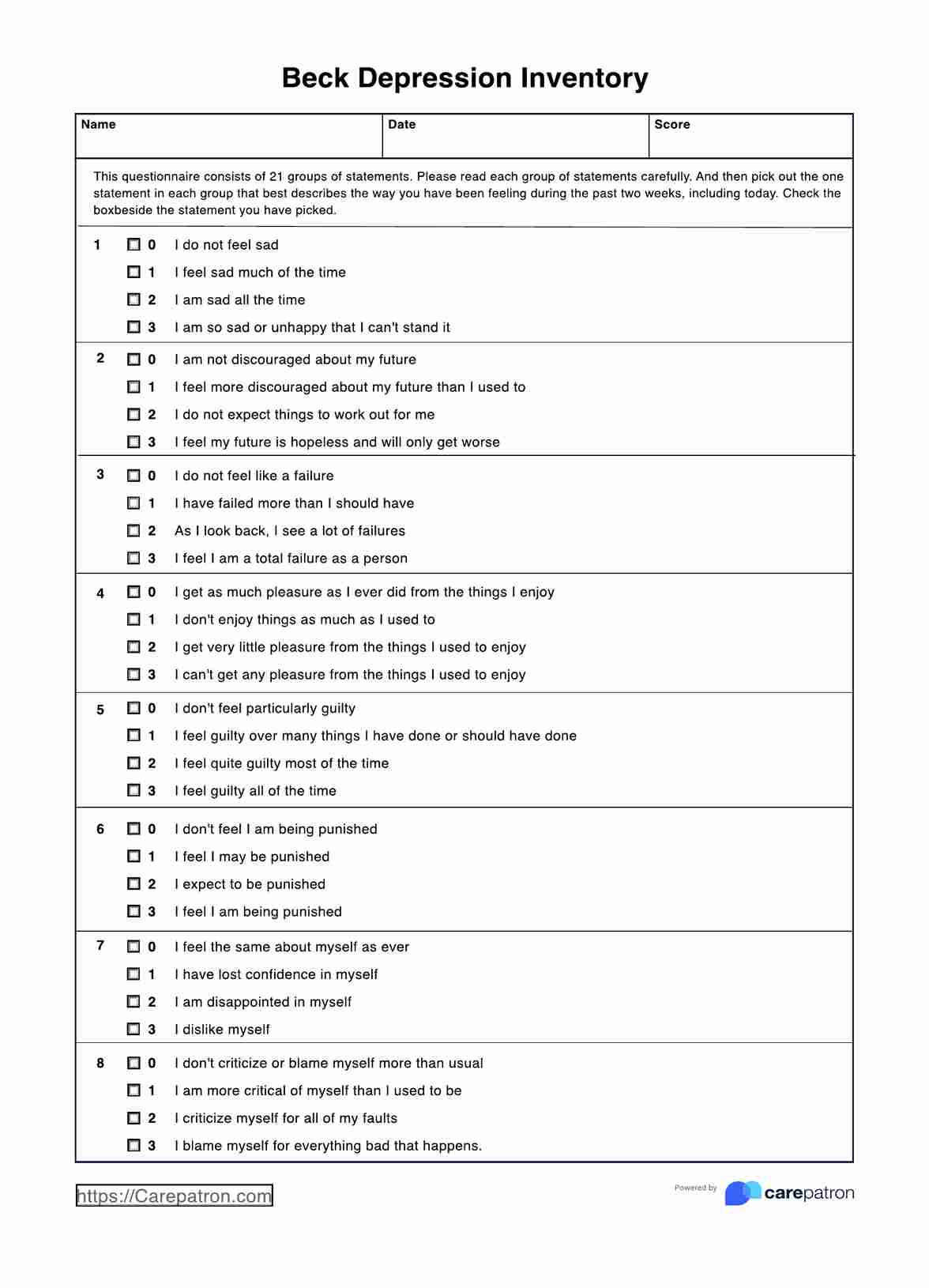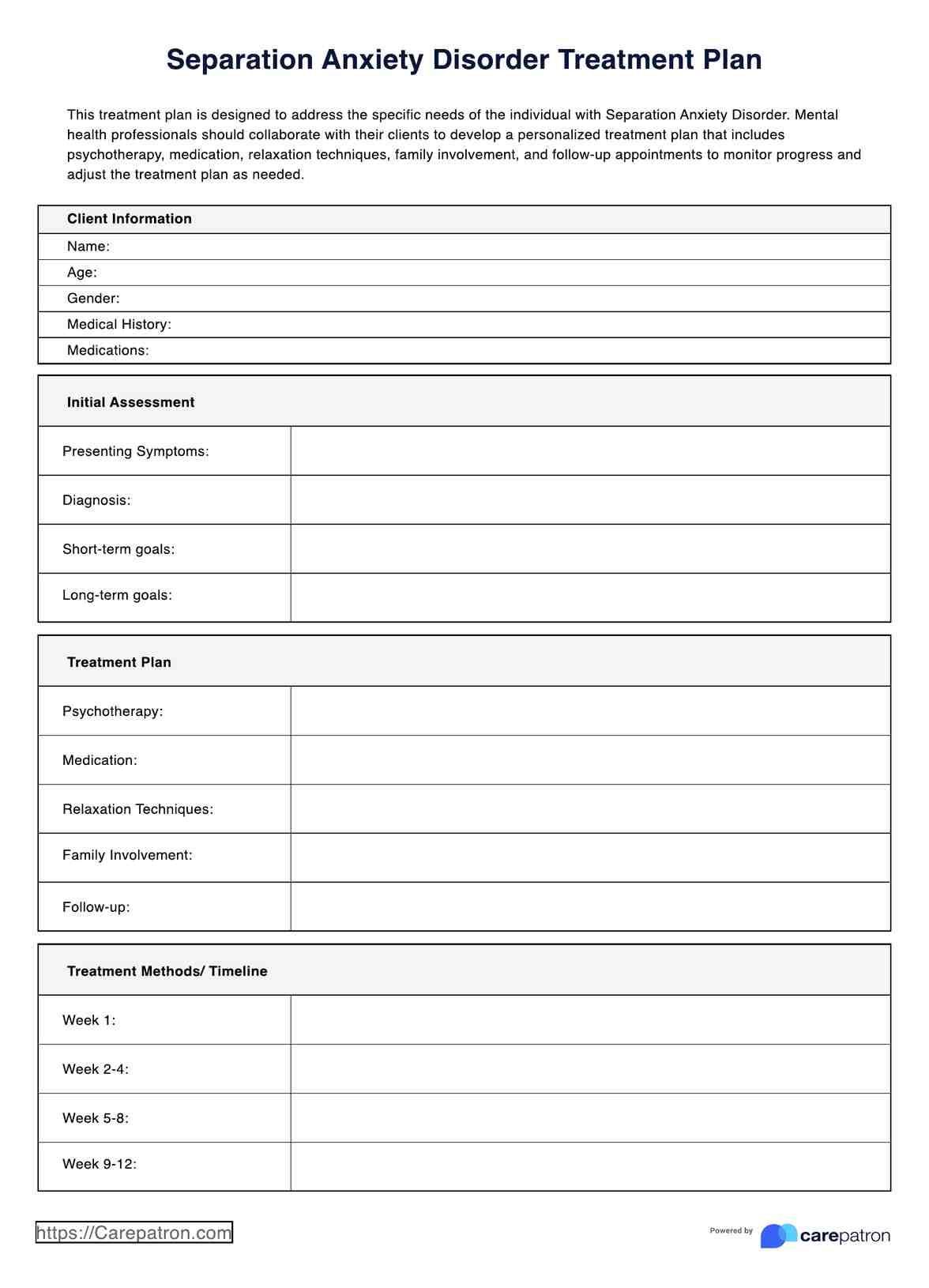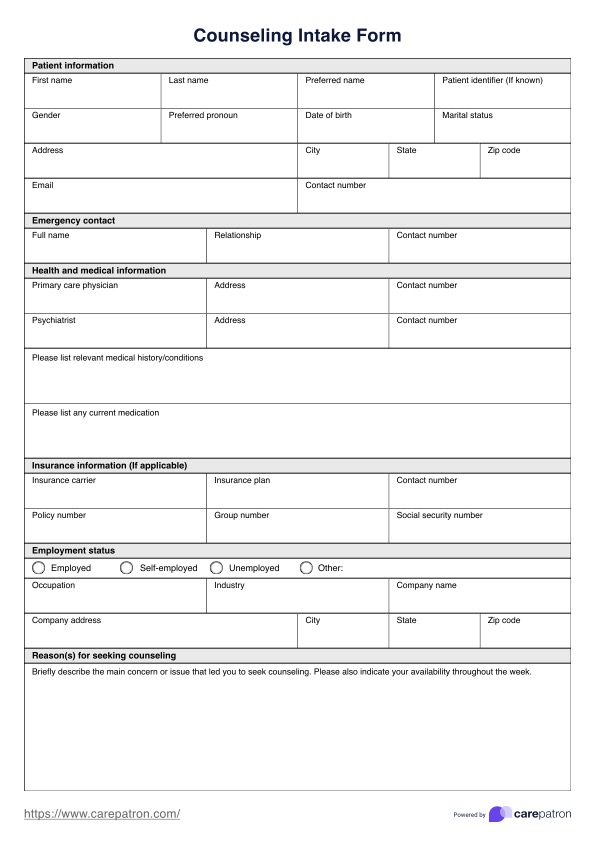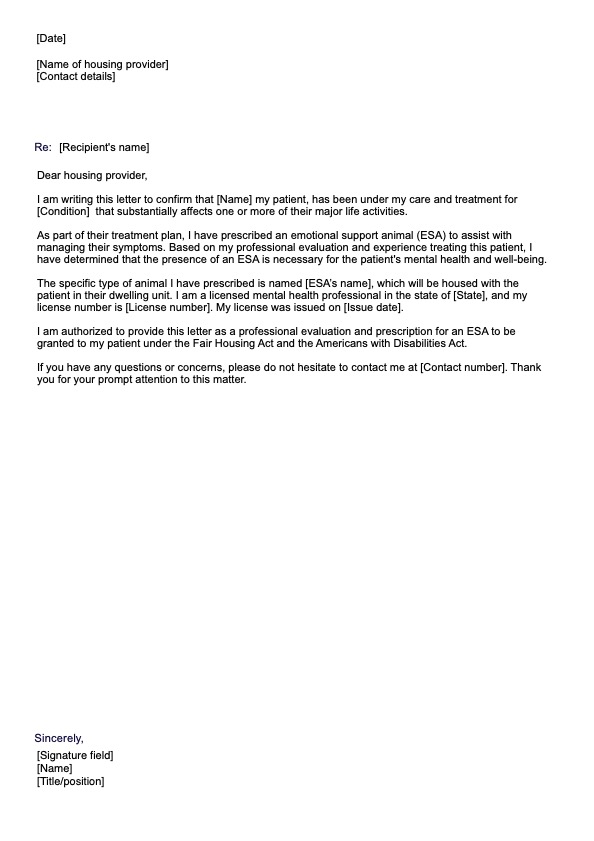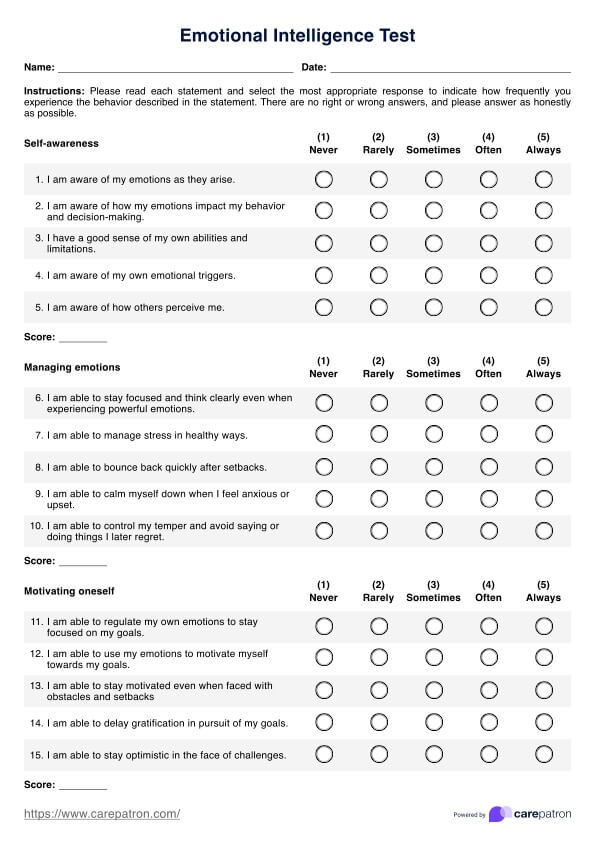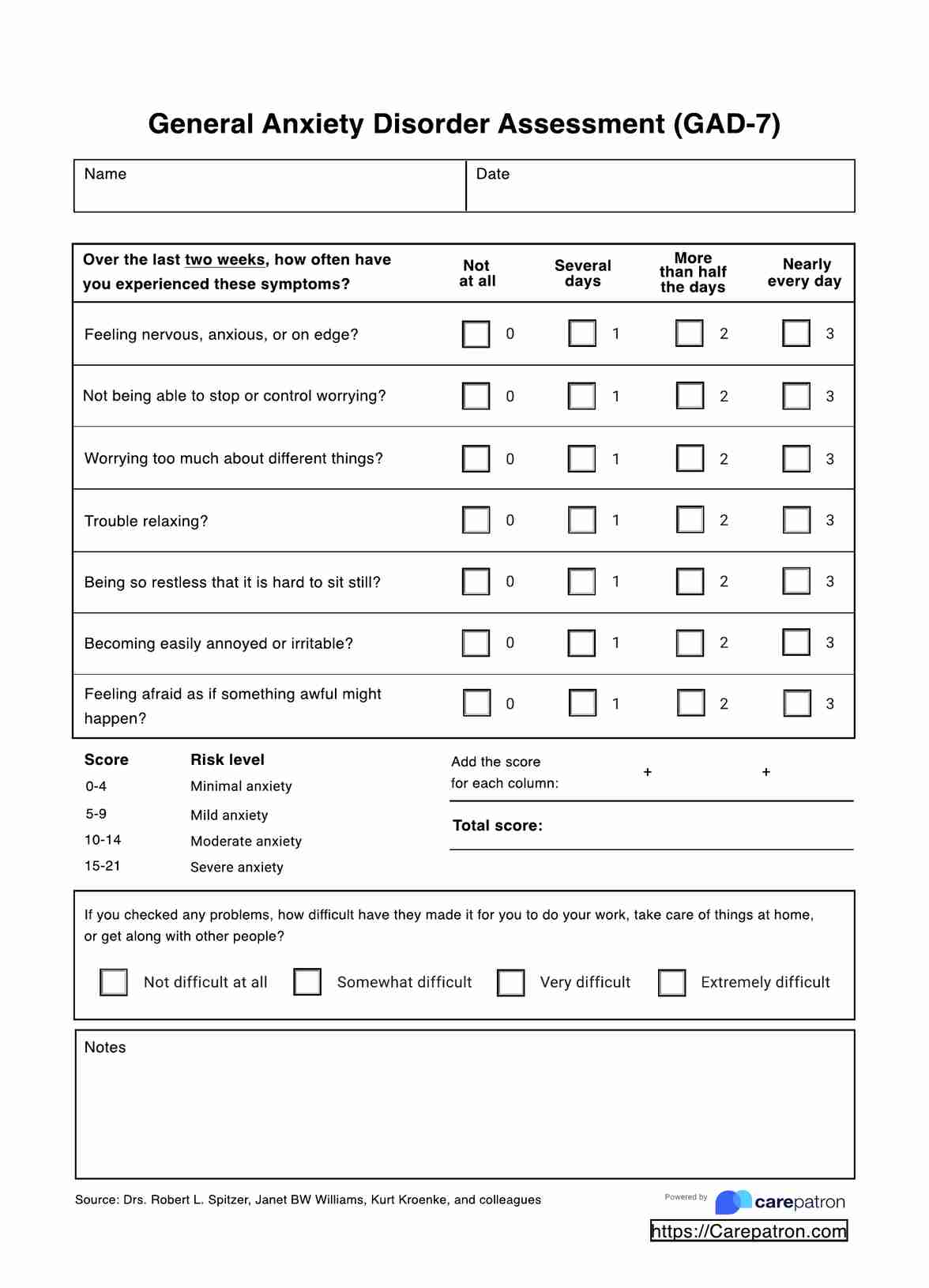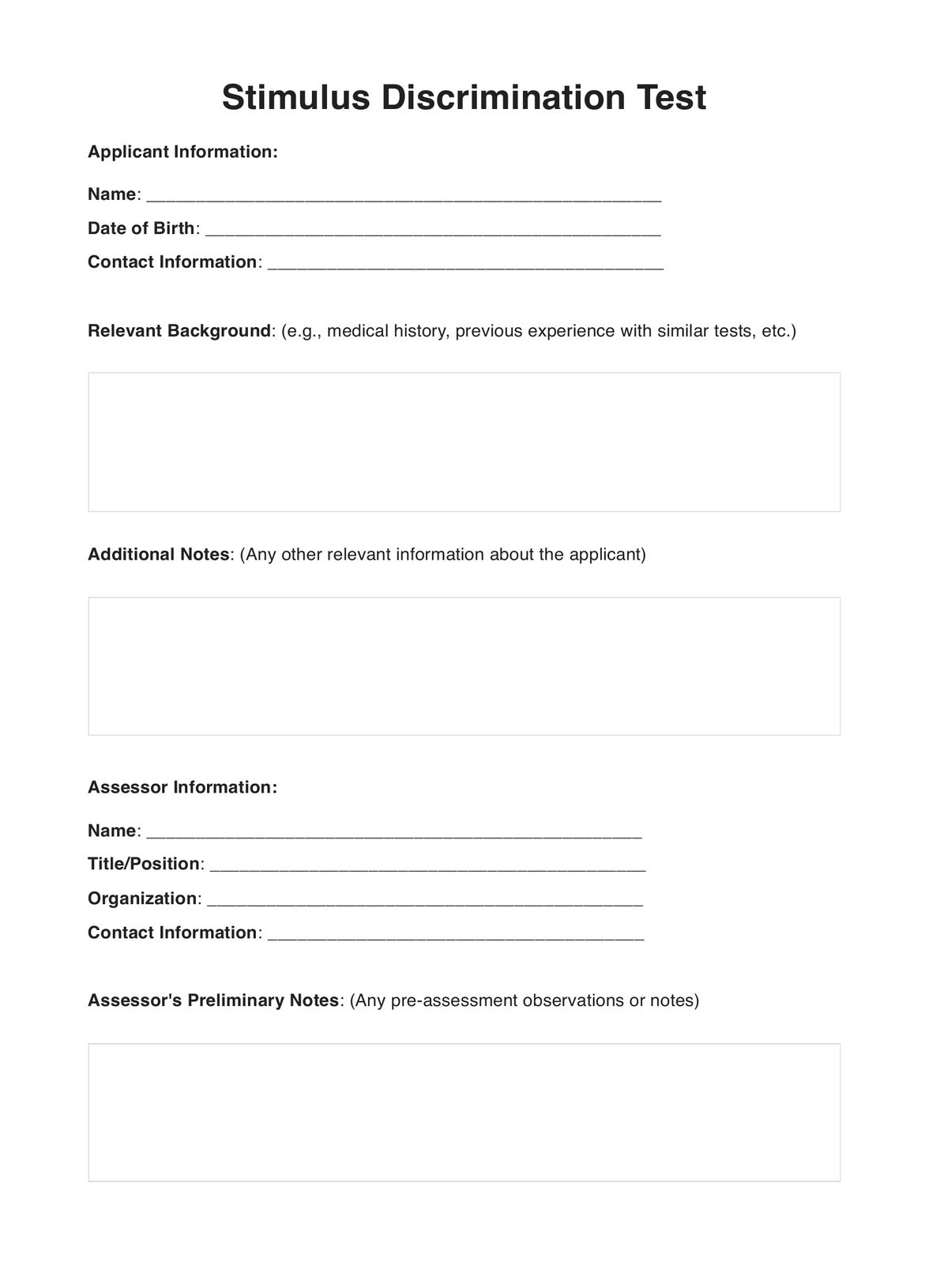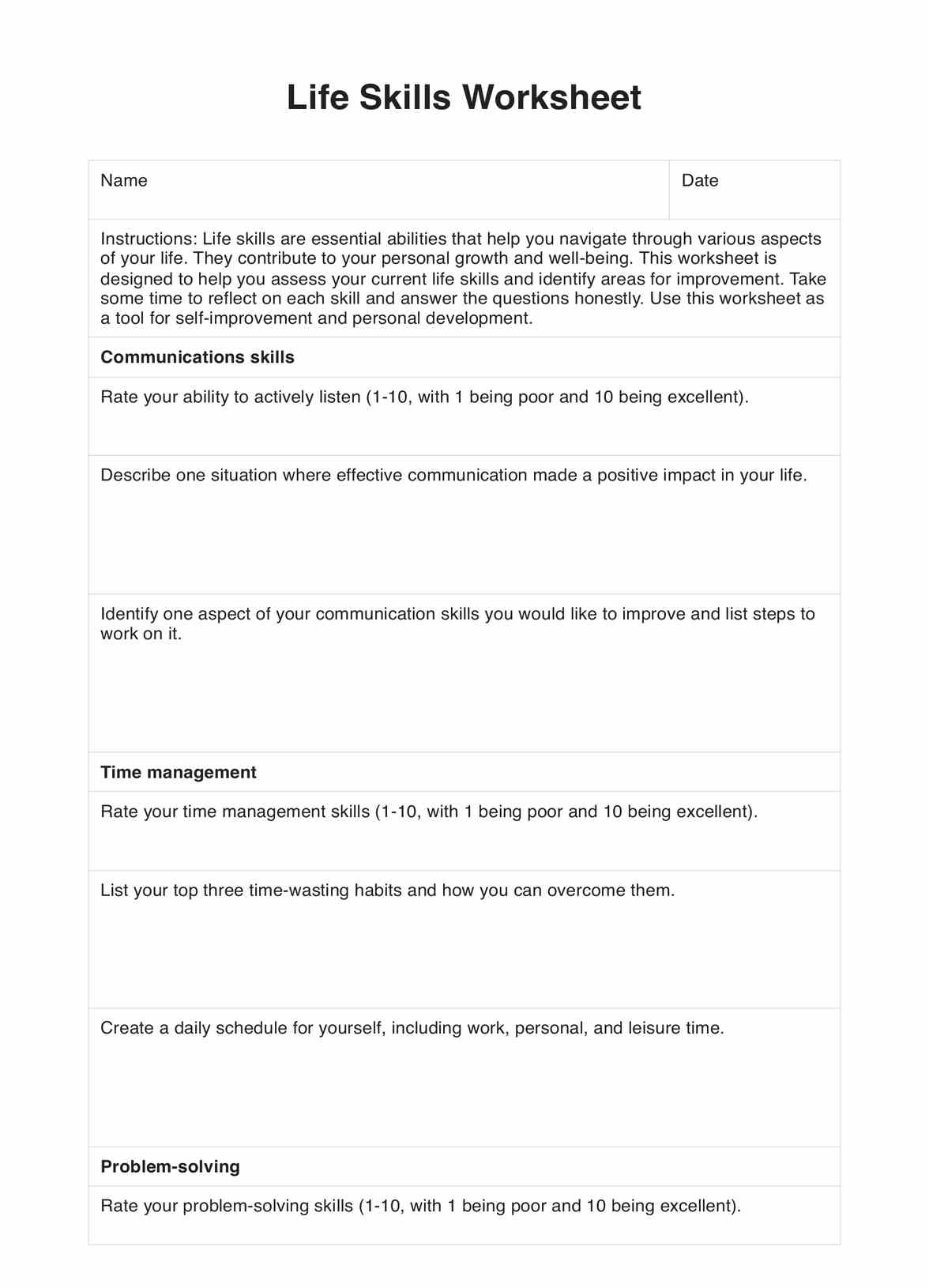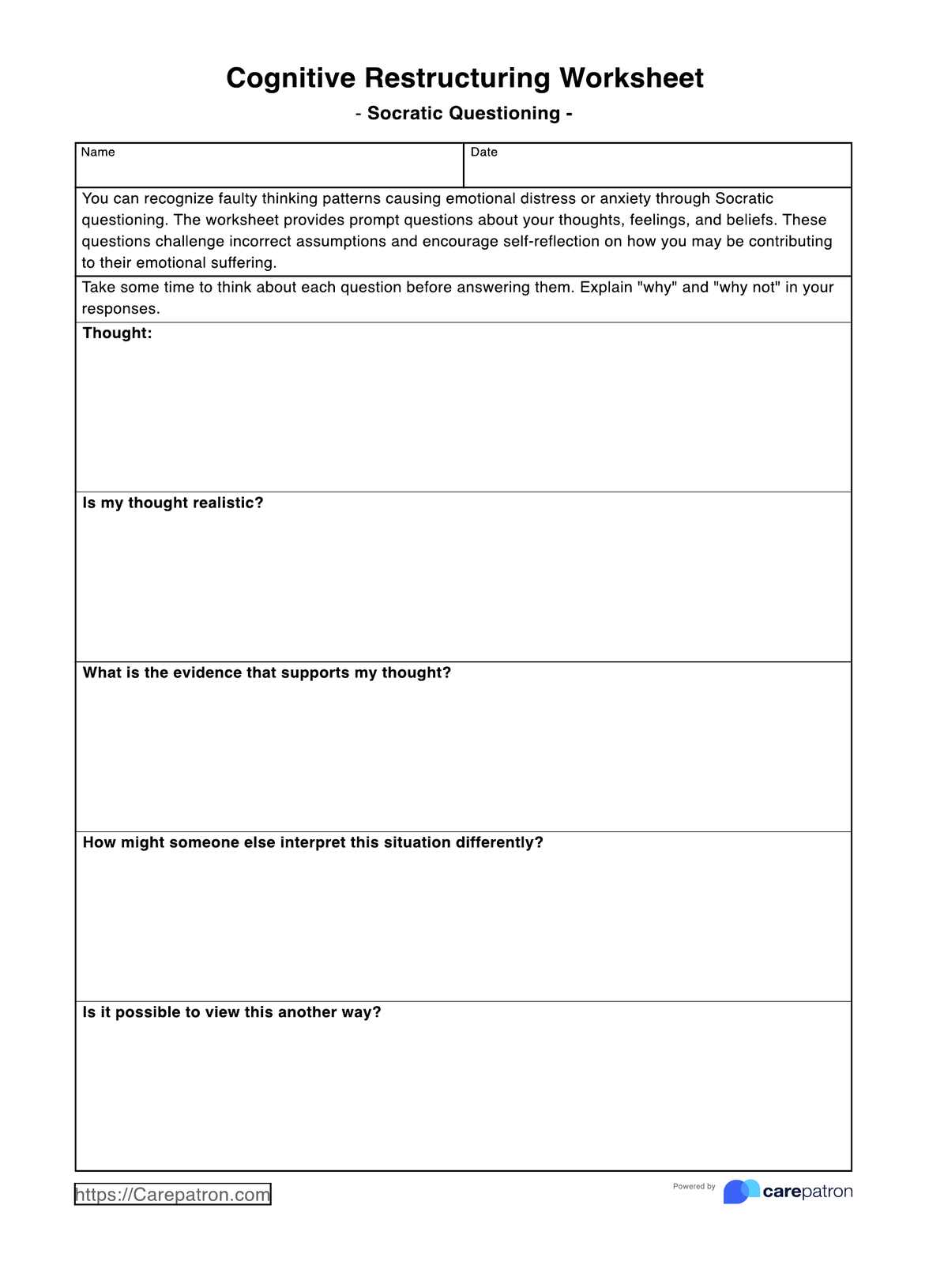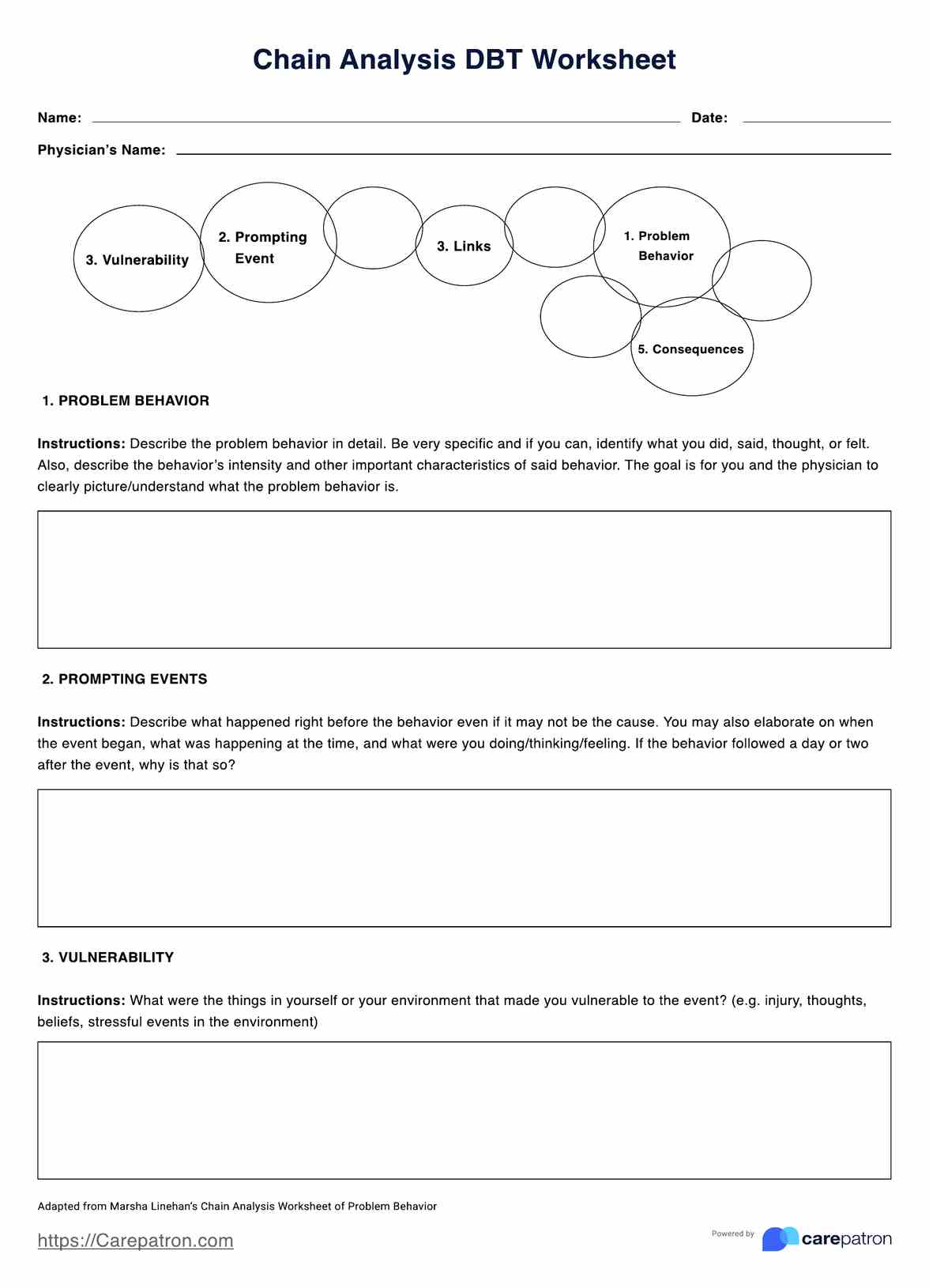Dearman DBT Worksheets
Improve communication skills and build stronger relationships with our free downloadable Dearman DBT worksheet.


What Is A Dearman DBT Worksheet?
The is a powerful tool that assists individuals in effectively conveying their needs, desires, and boundaries in a relationship with clarity and assertiveness. The acronym "DEARMAN" stands for Describe, Express, Assert, Reinforce, Mindful, Appear Confident, and Negotiate, delivering a structured framework that guides the clients through specific aspects of the communication process, from describing the issue at hand to negotiating a compromise that meets both parties' needs in a relationship.
This is based on the principles of Dialectical Behavior Therapy (DBT), representing a type of therapy that propels individuals towards acquiring the critical skills they need to manage their emotions, communicate more effectively, and foster more meaningful and positive relationships. With the assistance of the Dearman DBT Worksheet, individuals can acquire the vital ability to communicate in a way that is not only respectful but is also clear, efficient, and above all, effective while simultaneously promoting negotiation and compromise.
Overall, the Dearman DBT Worksheet is a valuable tool for anyone seeking to improve their communication skills and establish more substantial and positive relationships. Whether you are trying to assert your needs in a personal or professional setting or simply striving to improve your communication skills in general, the Dearman DBT Worksheet can help you step closer to your goals and lay the foundation for enhanced relationships with others.
Dearman DBT Worksheets Template
Dearman DBT Worksheets Example
How To Use This Dearman DBT Worksheet
Step One: Download the PDF
The first step to using the Dearman DBT Worksheet is to download the PDF format of the worksheet from this page. Alternatively, you can access this worksheet from the Carepatron template library, which allows you more flexibility on the structure of the template.
Step Two: Identify the Issue
The next step is to identify the specific issue that you want to address with the other person. This could be a request, concern, or boundary you need to set. Make sure to be clear and specific when describing the issue, as this will help you communicate your needs more effectively.
Step Three: Use the Dearman Acronym
Once you have identified the issue, use the Dearman acronym to guide you through the communication process. Here's a more detailed breakdown of each step of the acronym:
- Describe: Begin by describing the issue in detail. Be specific and avoid making assumptions or judgments about the other person's thoughts or feelings. Stick to the facts and use "I" statements to describe your own experiences.
- Express: Express how you feel about the issue. This can include your emotions, thoughts, and reactions to the situation. Use "I" statements to avoid blaming or accusing the other person.
- Assert: Assert your needs and expectations. Be clear about what you want and need from the other person, and why it's important to you. Use "I" statements to clarify that this is about your needs, not the other person's.
- Reinforce: Reinforce the benefits of meeting your request. Explain how meeting your needs can benefit the other person or the relationship. This can include positive outcomes for both parties or the relationship as a whole.
- Mindful: Be mindful and calm during the conversation. Use your mindfulness skills to stay focused and present during the conversation. Take deep breaths and try to stay centered.
- Appear confident: Appear confident in your communication. Use good posture, make eye contact, and speak clearly and confidently. This can help you convey your message more effectively.
- Negotiate: Finally, negotiate a compromise that meets both your needs and the needs of the other person. This might involve brainstorming alternative solutions, setting clear boundaries, or establishing a plan of action.
Step Four: Practice and Refine
Using the Dearman DBT Worksheet takes practice, so it's essential to be patient with yourself and allow room for growth and improvement. Take time to reflect on each conversation and identify areas where you can improve your communication skills. With consistent practice, you can become more confident and effective in your communication, leading to stronger and healthier relationships with others.
Who Can Use these Printable Dearman DBT Worksheets (PDF)?
The Dearman DBT Worksheet is a valuable tool that is used by an array of individuals across the mental health landscape, including therapists, counselors, clinical psychologists, psychiatrists, and those looking to enhance their communication skills and their relationships.
Therapists and counselors, such as cognitive-behavioral therapists, dialectical behavior therapists, and marriage and family therapists, can use the Dearman DBT Worksheet as part of their treatment plans for clients with communication difficulties or relationship issues. The worksheet provides a structured approach to communication, which can be particularly helpful for clients struggling with interpersonal effectiveness.
The Dearman DBT Worksheet is not solely the domain of mental health professionals. Indeed, individuals searching for self-development can also gain significant benefits from this worksheet, including enhancing their communication prowess, setting boundaries, and fostering compromise. However, it is crucial to note that the worksheet should not be utilized as a standalone tool for addressing mental health concerns but rather as part of a more comprehensive treatment plan.
Given the intricacy and nuance of the Dearman DBT Worksheet, it is highly recommended that individuals seeking to employ it for self-improvement purposes do so under the guidance of a qualified and experienced mental health professional. By doing so, individuals can ensure that they remain safe and supported throughout their journey of self-discovery.
Why Is This Form Useful For DBT Counselors?
The Dearman DBT Worksheet is a vital tool for counselors and therapists practicing Dialectical Behavior Therapy (DBT) due to its structured approach to communication and relationship building. Here are three key points that highlight the usefulness of this worksheet for DBT counselors:
A structured approach to communication
The Dearman DBT Worksheet provides a clear and structured approach to communication that is especially beneficial for individuals struggling with interpersonal effectiveness. It offers a systematic way to communicate effectively, set boundaries, and negotiate a compromise. This structured approach allows DBT counselors to teach clients valuable communication skills that can be applied in their daily lives.
Promotes self-awareness and validation
The worksheet encourages clients to express their feelings and thoughts in a non-judgmental manner, which can help them develop self-awareness and validation. By using the worksheet, clients can learn to communicate their needs effectively and assertively while also learning to recognize and validate their own emotions.
Enhances treatment outcomes
The Dearman DBT Worksheet can be used as part of a larger treatment plan to help individuals with communication difficulties and relationship issues. By utilizing the worksheet, counselors can help clients develop better communication skills, establish healthy boundaries, and negotiate more effectively, which can lead to better treatment outcomes and stronger relationships.
.png)
Benefits of Dearman DBT Worksheets Template
Improved Accessibility
The Dearman DBT Worksheet is available in an interactive PDF format, making it easily accessible to individuals without needing additional apps or tools. You can fill the form out digitally using any free mainstream PDF reader. You can also print it out, depending on what works best for you.
Structured Method
The worksheet provides a structured approach to communication, which can be particularly helpful for individuals struggling with interpersonal effectiveness. The worksheet breaks down communication into specific components, making improving communication a less overwhelming and more manageable task for individuals.
Establish Boundaries
The Dearman DBT Worksheet can also be used to help individuals establish healthy boundaries in their relationships. The worksheet provides prompts and guidance for individuals to identify their personal boundaries and communicate them effectively to others. This can be especially beneficial for individuals who struggle with boundary-setting in their relationships.
Satisfactory Compromise
The worksheet encourages individuals to negotiate for a satisfactory compromise when communicating their needs and wants. This can be particularly helpful for individuals who tend to avoid conflict or struggle with assertiveness. By providing a framework for negotiating, the worksheet can help individuals feel more confident in their ability to communicate effectively.
Easy Reference
The worksheet can be completed digitally and stored for future reference, making it easy for individuals to revisit their communication goals and progress. This can be especially helpful for individuals who are working on long-term communication skills, as they can track their progress over time and make adjustments as needed.
Commonly asked questions
DBT stands for Dialectical Behavior Therapy, which is a type of therapy that was initially developed to treat individuals with borderline personality disorder. However, it has since been adapted for use in treating a wide range of mental health conditions, including depression, anxiety, and substance use disorders.
While the Dearman DBT Worksheet can be used by individuals seeking self-development, it is recommended to use it under the guidance of a trained mental health professional. This is because the worksheet is intended to be used as part of a larger treatment plan, and a mental health professional can provide the support and guidance needed to use the worksheet effectively and safely.
The effectiveness of the Dearman DBT Worksheet will depend on the individual and their specific communication goals and challenges. However, the worksheet has been shown to be effective for many individuals, particularly those who struggle with interpersonal effectiveness and boundary-setting in their relationships.


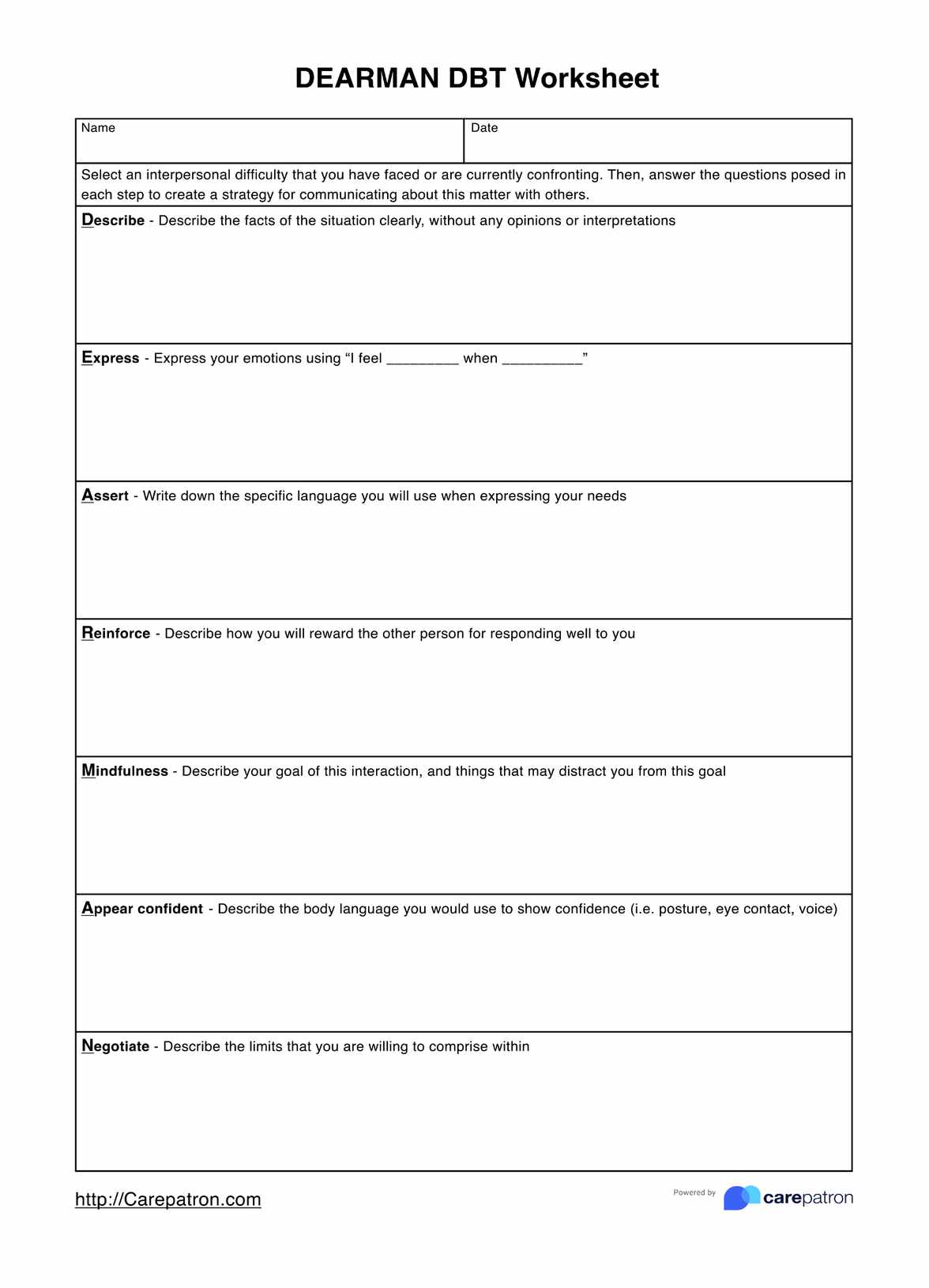
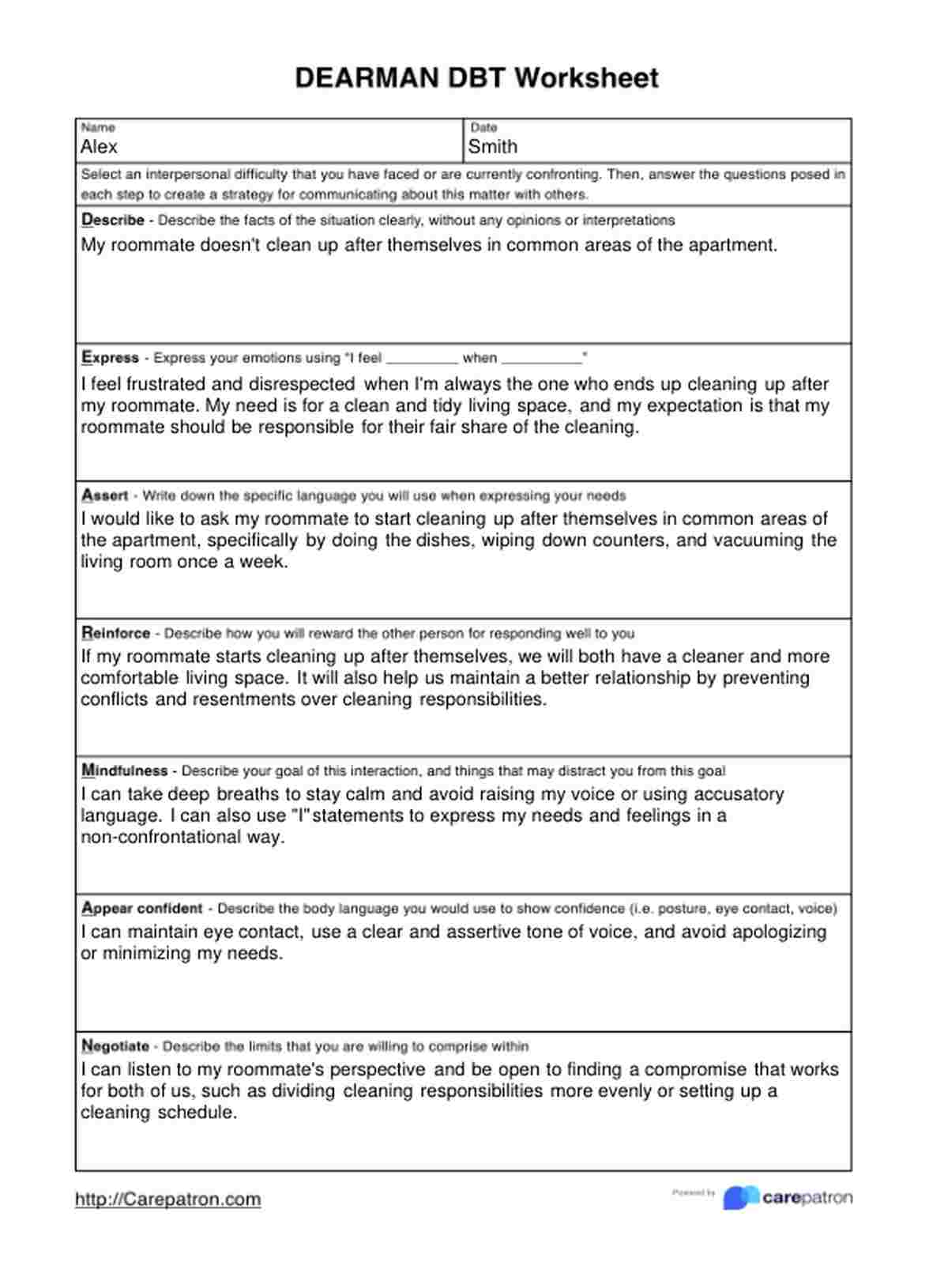















-template.jpg)





















































































